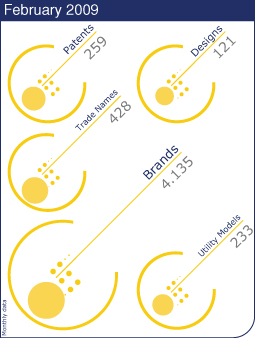
Presentation of the study by the OECD on the economic impact of piracy and counterfeiting
At the end of February, the Ministry of Industry, Tourism and Commerce received the public presentation of the First Phase of the Study of the Organization for Economic Cooperation and Development (OECD), “Economic Impact of Counterfeiting and Piracy,” an act jointly organized by the Spanish Patent and Trademark Office (OEPM) and the OECD.
The presentation of the study, the first conducted in Spain , was attended by Ministry Subsecretary Amparo Fernández González, who participated in the inauguration, and the Spanish Ambassador to the OECD, Cristina Narbona, who closed the act.
This first phase of the study focuses on the analysis of the violations of industrial and intellectual rights of tangible products. This phase will be followed by a second one which will study unfair competition, imitation and piracy on the Internet and a third phase that will deal with other forms of unfair competition, imitation and piracy not included in previous categories.
Highlighted economic data analyzed in the report include the following:
- The most affected sectors are those of textiles and electronic equipment.
- 50 percent of the economies surveyed confirm that the trend has extended to other sectors over the past 5 years, of which 26 percent believe expansion has been “rapid.” Only four of the economies surveyed considered that this trend has been reduced in size over the last five years.
- The value of confiscated merchandise in 30 economies reached 581 million dollars in 2005 (0.01 percent of the total imports of all the economies affected).
- Trade of sensitive products reached 6.59 billion dollars in 2004 (75 percent of total trade).
- The five categories of the “most sold” sensitive products make up 76 percent of confiscated illegal products and totals 1.63 billion dollars (18 percent of the world commerce).
- The five main countries of origin of counterfeit merchandise account for 58 percent of all confiscated merchandise.
Regarding conclusions on the magnitude of the trend, it should be pointed out that the volume of illegal global activity would reach 200 billion dollars, keeping in mind that this result doesn't cover the total number of customs operations, nor does it reflect data on domestic markets.
The study doesn't reflect digital violations (which will be studied in phase II), and therefore real figures could be notably higher.
Also during the act, which took place on February 26, an overall view was provided on activities that are being put into place on the national and community level to combat piracy; initiatives in which public and private sectors are participating.
The report stresses the increasing presence of mass consumption products, including analyses of specific sectors such as those of audiovisual, automotive, electronic devices, food, tobacco and pharmaceuticals.
Additionally, it underlines the importance of distinguishing between consumers who buy these products and are fully aware that they form part of unfair competition and pirated material, and those consumers who are genuinely deceived.
The market analysis includes the study of other factors, such as distribution and ties to organized crime.
This aim of the study is to make people aware of the importance of problems related to violating industrial and intellectual property rights, as well as analyzing the social and economic affects of this trend.
To consult the complete study, to unload the attached pdf in the page of the OEPM.

